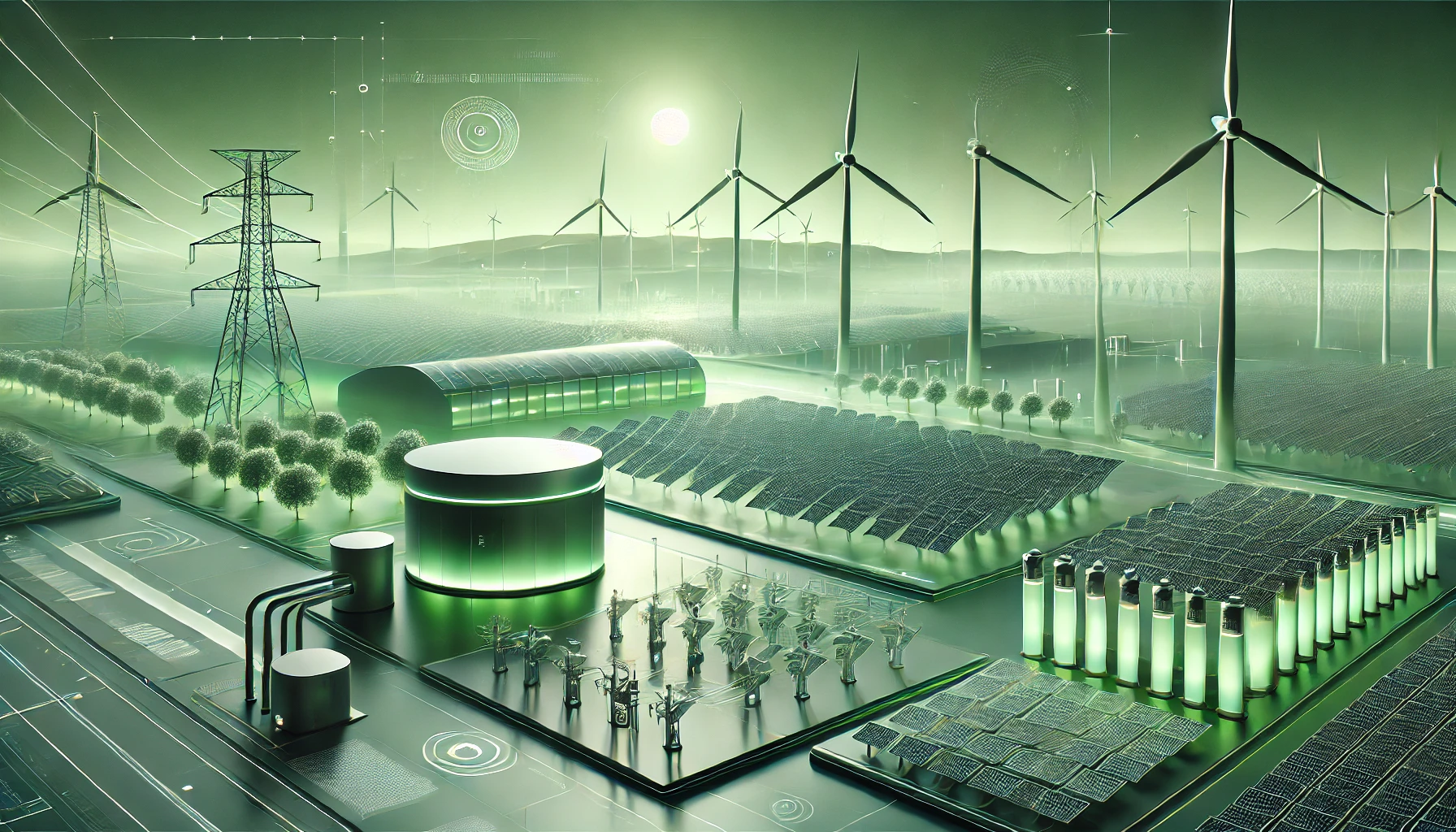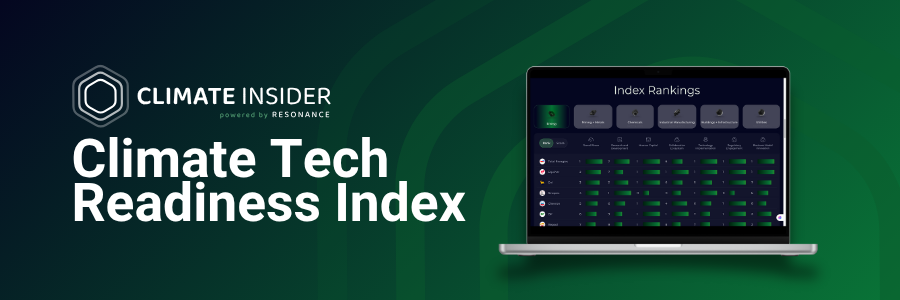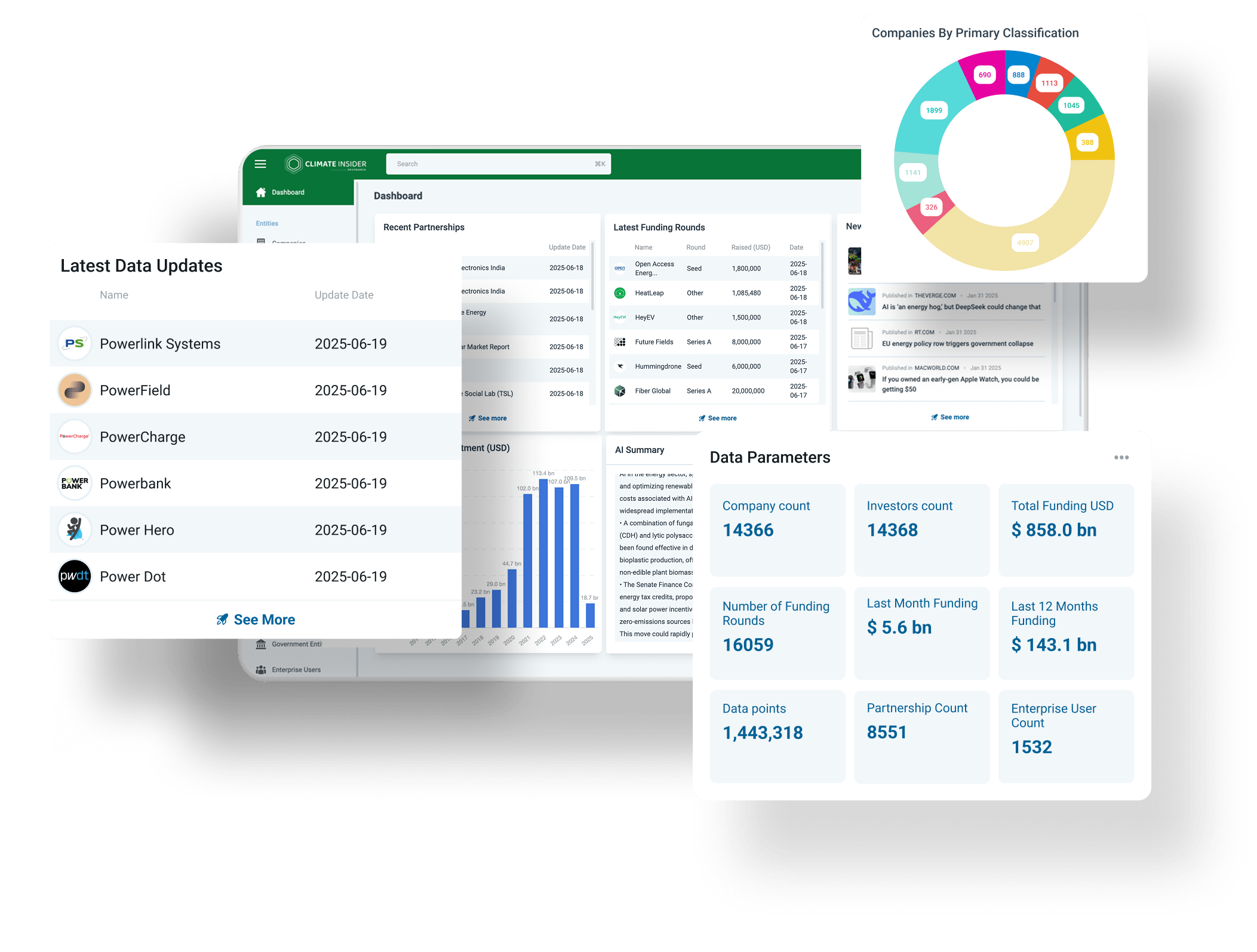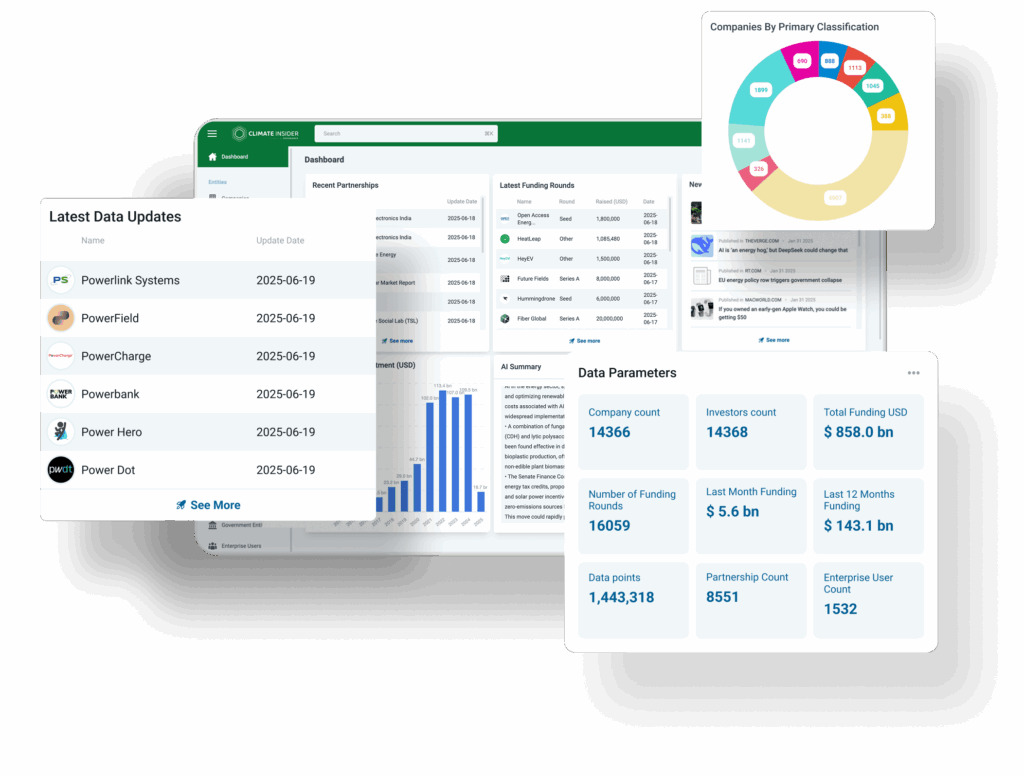The clean energy sector emerged as the linchpin of climate technology in 2024, attracting significant funding, fostering groundbreaking innovations, and laying the foundation for transformative growth. As governments, businesses, and investors ramped up their focus on renewable energy and decarbonization, the sector revealed trends that will shape the path to 2025 and beyond.

Clean Energy’s Unstoppable Growth in 2024
Clean energy investments dominated the climate tech space in 2024, securing the largest share of global funding. Key technologies such as renewable energy generation, battery storage, and grid modernization attracted billions of dollars in capital, signaling investor confidence in the sector’s growth trajectory.
Top Funding Highlights:
- Atlas Renewable Energy raised $289 million to develop Chile’s largest battery storage project, addressing the need for stable renewable energy supply.
- Natron Energy secured $1.4 billion for its sodium-ion battery gigafactory in North Carolina, marking a significant leap in safer, scalable storage technology.
- BrightNight attracted $204 million for hybrid solar-wind-battery projects in the U.S. and Asia-Pacific, a testament to the rising demand for integrated solutions.
- Form Energy raised $450 million to scale its revolutionary iron-air batteries for grid-scale storage, addressing renewable intermittency.
- Continuum Green Energy in India received $150 million for hybrid wind-solar initiatives to meet surging energy demands.
- SolarDuck secured $70 million to advance its floating solar technology, a critical solution for space-constrained regions.
These funding rounds underscore the sector’s ability to tackle key challenges in renewable energy generation and distribution while scaling to meet growing demand.
Key Trends from 2024
The developments in 2024 highlight several pivotal trends that will drive the clean energy sector into 2025.
1. The Rise of Hybrid Energy Systems
Hybrid solutions, integrating solar, wind, and battery storage, gained significant traction in 2024. Companies like BrightNight and Continuum Green Energy showcased the viability of these models, which promise reliability and cost efficiency, especially in regions with fluctuating energy resources.
2. Focus on Long-Duration Energy Storage
Innovations in long-duration storage were a standout feature of 2024. Form Energy and Hydrostor pushed the envelope with technologies capable of storing energy for days rather than hours, paving the way for more renewable integration into the grid.
3. Decentralized Energy for Emerging Markets
Companies like Zola Electric demonstrated the potential of decentralized energy systems to bridge gaps in underserved markets. By deploying solar and battery microgrids, these startups are electrifying rural areas in Africa and Southeast Asia, where traditional grid expansion remains slow.
4. Floating and Offshore Renewables
Floating solar and offshore renewable technologies gained prominence, led by innovators like SolarDuck. These solutions are vital for densely populated regions with limited land for traditional solar farms.
5. Grid Modernization and Cross-Border Collaboration
Infrastructure upgrades became a focal point in 2024. Projects like Xlinks, which aims to transport solar energy from Morocco to Europe, exemplify the growing emphasis on modernized grids and international energy trade.
Challenges That Shaped the Sector
Despite remarkable growth, clean energy faced its share of challenges in 2024:
- Supply Chain Constraints: The limited availability of critical minerals like lithium slowed battery production.
- Policy Hurdles: Delayed permitting processes in emerging markets hindered project rollouts.
- Energy Storage Costs: While innovations like sodium-ion batteries gained attention, cost reductions remain necessary for widespread adoption.
These obstacles underscore the need for diversified technology investment and collaborative policymaking as the sector advances.
What 2024 Tells Us About 2025
The trends and challenges of 2024 provide a roadmap for the clean energy sector’s evolution in 2025.
1. Continued Investment Momentum
Clean energy funding is projected to surpass $75 billion in 2025, with major attention on scaling energy storage and grid upgrades. Companies like Natron Energy and Form Energy are expected to lead the charge in developing cost-effective, scalable storage technologies.
2. Emerging Markets in the Spotlight
Emerging regions, particularly Africa and Southeast Asia, will see accelerated adoption of decentralized renewable systems. With companies like Zola Electric spearheading innovation, these regions are poised to attract significant investments in 2025.
3. Focus on Grid Reliability
Cross-border energy initiatives and grid modernization projects will gain traction. The success of projects like Xlinks will likely spur similar collaborations, ensuring the efficient distribution of renewable energy across continents.
4. Technology Breakthroughs
Innovative solutions, such as floating solar and compressed air storage, are expected to reach commercialization, driven by the efforts of companies like SolarDuck and Hydrostor. These advancements will redefine scalability and reliability in renewable energy.
5. Policy-Driven Growth
Supportive legislation, such as the U.S. IRA and Europe’s Green Deal, will continue to catalyze investments. Expanding these frameworks to other regions will be critical in sustaining momentum.
Climate Insider Analysis
2024 has set a high bar for innovation and investment in the clean energy sector. Solar, energy storage, and green hydrogen are not just leading the charge—they’re reshaping the future of global energy systems. However, the road to a net-zero world isn’t without challenges. Funding disparities, scalability issues, and supply chain constraints still pose hurdles.
As we look to 2025, collaboration between governments, startups, and investors will be critical. Companies like HelioTech, VoltGrid, and HydroGreen Power are proving that innovation can drive both profitability and impact. At Climate Insider, we believe 2025 will be a defining year for clean energy markets as the sector pivots from scaling individual technologies to creating integrated, resilient energy ecosystems.








